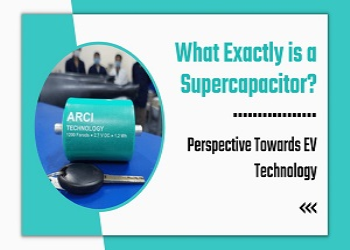Friday, May 05, 2023
By CarKhabri Team

The Fundamentals of Supercapacitors: Understanding Energy Storage
Supercapacitors are gaining attention as a promising energy storage solution, and therefore people are keen to understand more about it for using as a strong source of energy storage. Unlike traditional capacitors, supercapacitors are designed for specific uses and boast high capacitance. While supplying the external voltage, the surface of the electrodes material becomes positively and negatively charged, respectively, leading to the formation of double layers that store electrical charge. This charge storage mechanism, known as Electrical Double Layer Capacitance (EDLC), gives rise to the concept of supercapacitors.

However, the EDLC-type supercapacitor has a disadvantage of having high power density but low energy density, limiting its applicability to a wide range of devices. Scientists have been working to address this issue by introducing the notion of pseudo-capacitance. Pseudo-capacitors feature a combination of charge storage mechanisms, leading to a boost in energy density by 10-20 times compared to EDLC-based supercapacitors.
Supercapacitors differ from batteries in several aspects, including their electrostatic surficial charge storage mechanism that quickly stores and supplies vast amounts of energy, leading to high power density. Batteries, on the other hand, store energy through electrochemical charge storage, leading to slow charging and discharging. Supercapacitors have a lower energy density than batteries, but they also have a higher cycle life and are more durable.
Several organizations are manufacturing supercapacitor devices, and it is estimated that these devices will be commercially available on a significant scale within one to two decades. While both supercapacitors and batteries have their place in storing and providing renewable energy, their energy requirements for electric vehicles are distinct. Supercapacitors provide power for starting and accelerating the vehicle, whereas batteries are required for long-term operation. Both technologies can complement each other to better future outcomes, but they cannot entirely replace one another.
Conclusion: Understanding the fundamentals of supercapacitors is crucial to comprehend the subject matter of energy storage. While the supercapacitor field is relatively new compared to batteries, the development of pseudo-capacitors and other crucial features will likely lead to more widespread commercial availability of these devices in the coming years.



Comments (0)